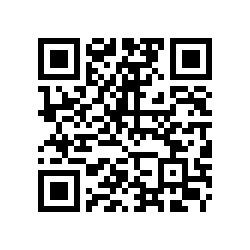Perancangan UI/UX dengan Metode Design Thinking Pada Shoekuna Shoe Laundry Berbasis Mobile
(1) Politeknik Piksi Ganesha Bandung, Indonesia
(2) Politeknik Piksi Ganesha Bandung, Indonesia
(*) Corresponding Author
Abstract
Full Text:
PDFReferences
J. Simarmata et al., Pengantar Teknologi Informasi. Yayasan Kita Menulis, 2021.
Y. D. Ni Kadek, “Tren New Normal Pada Industri Fast Fashion Di Indonesia: Adaptasi Fast Fashion Di Masa Pandemi,” Bhumidevi J. Fash. Des., vol. 1, no. 01, pp. 68–75, 2021.
S. N. Rakhmah and I. Rizki, “Sistem Informasi Pelayanan Jasa Laundry Sepatu Pada Queen Shoes Cleaning,” J. Kaji. Ilm., vol. 22, no. 1, pp. 21–34, 2022.
S. W. Putro, “Pengaruh Kualitas Layanan dan Kualitas Produk Terhadap Kepuasan Pelanggan dan Loyalitas Konsumen Restoran Happy Garden,” J. Strateg. Pemasar., vol. 2, no. 1, pp. 1–9, 2014.
Z. R. Selvi Rianti and F. Yuliani, “Kualitas Pelayanan Publik,” JIANA (Jurnal Ilmu Adm. Negara), vol. 17, no. 2, pp. 412–419, 2019.
[1], “Peran Mediasi Customer Satisfaction dalam Customer Experience Dan Loyalitas Pelanggan,” J. Bisnis dan Manaj., vol. 7, no. 2, pp. 171–184, 2020, doi: 10.26905/jbm.v7i2.4795.
D. Fatihudin and A. Firmansyah, Pemasaran Jasa:(Strategi, Mengukur Kepuasan Dan Loyalitas Pelanggan). Deepublish, 2019.
I. G. I. Sudipa and E. A. P. Lestari, “RANCANG BANGUN SISTEM INFORMASI PENDUDUK DUSUN (STUDI KASUS : DUSUN TEGAL KORI KAJA UBUNG),” J. Teknol. Inf. dan Komput., vol. 5, no. 2, Oct. 2019, doi: 10.36002/jutik.v5i2.782.
R. N. Wahidah, W. P. Mustika, R. Drevianto, and P. Septiyo, “Sistem Informasi Perhitungan Upah Lembur Karyawan (SIPULEN) Berbasis Web,” J-SAKTI (Jurnal Sains Komput. dan Inform., vol. 6, no. 1, pp. 518–531, 2022.
I. K. A. G. Wiguna, D. P. D. K. Dewi, and I. G. I. Sudipa, “Implementasi OLAP pada Data Kerja Praktik dan Tugas Akhir Menggunakan Framework Modular Cube JS,” INFORMAL Informatics J., vol. 6, no. 3, pp. 142–153, 2021, doi: https://doi.org/10.19184/isj.v6i3.27614.
A. A. Yulisar, “Sistem Informasi Pelayanan Jasa Laundry Sepatu Pada Shoes Cleaning Majalengka.” Universitas Komputer Indonesia, 2019.
I. D. G. A. Pandawana, M. L. Radhitya, I. M. S. Sandhiyasa, and B. T. Bramstya, “APLIKASI E-SEWA BARANG BERBASIS MOBILE,” J. Krisnadana, vol. 1, no. 3, pp. 26–36, 2022.
D. Haryuda, M. Asfi, and R. Fahrudin, “Perancangan UI/UX Menggunakan Metode Design Thinking Berbasis Web Pada Laportea Company,” J. Ilm. Teknol. Infomasi Terap., vol. 8, no. 1, pp. 111–117, 2021.
G. Karnawan, “Implementasi User Experience Menggunakan Metode Design Thinking Pada Prototype Aplikasi Cleanstic,” J. Teknoinfo, vol. 15, no. 1, pp. 61–66, 2021.
Sugiyono, Metode penelitian pendidikan : Pendekatan kuantitatif, kualitatif, dan R&D / Sugiyono. Bandung : Alfabeta, 2015, 2015.
N. M. C. Valentim, W. Silva, and T. Conte, “The students’ perspectives on applying design thinking for the design of mobile applications,” in 2017 IEEE/ACM 39th International Conference on Software Engineering: Software Engineering Education and Training Track (ICSE-SEET), 2017, pp. 77–86.
F. Uebernickel, L. Jiang, W. Brenner, B. Pukall, T. Naef, and B. Schindlholzer, Design thinking: The handbook. World Scientific, 2020.
R. Wolniak, “The Design Thinking method and its stages,” Syst. Wspomagania w Inżynierii Prod., vol. 6, 2017.
M. Azmi, A. P. Kharisma, and M. A. Akbar, “Evaluasi User Experience Aplikasi Mobile Pemesanan Makanan Online dengan Metode Design Thinking (Studi Kasus GrabFood),” J. Pengemb. Teknol. Inf. dan Ilmu Komput. e-ISSN, vol. 2548, p. 964X, 2019.
A. A. Razi, I. R. Mutiaz, and P. Setiawan, “Penerapan Metode Design Thinking Pada Model Perancangan Ui/Ux Aplikasi Penanganan Laporan Kehilangan Dan Temuan Barang Tercecer,” Demandia J. Desain Komun. Vis. Manaj. Desain, dan Periklanan, vol. 3, no. 02, pp. 219–237, 2018.
J. R. Lewis, “Usability testing,” Handb. Hum. factors Ergon., vol. 12, p. e30, 2006.
DOI: http://dx.doi.org/10.30645/j-sakti.v7i1.585
Refbacks
- There are currently no refbacks.
J-SAKTI (Jurnal Sains Komputer & Informatika)
Published Papers Indexed/Abstracted By:
Jumlah Kunjungan :











